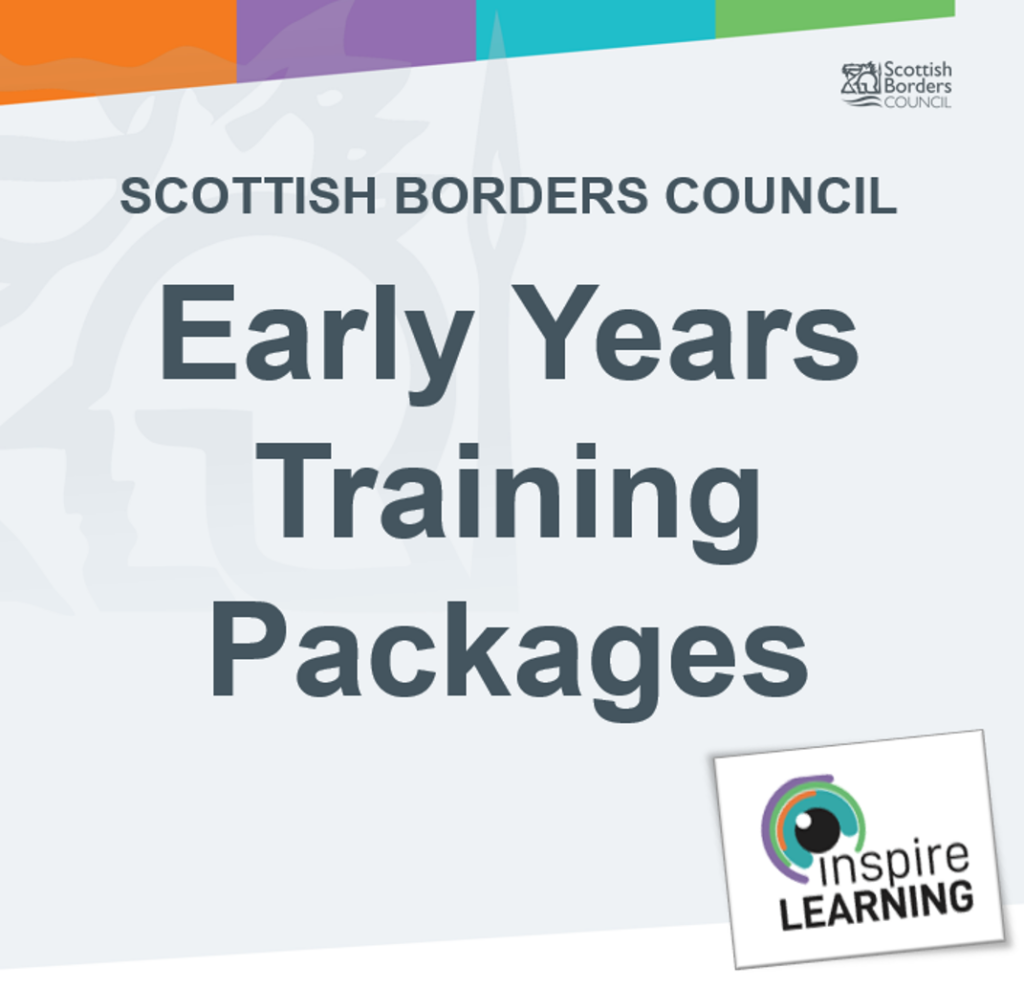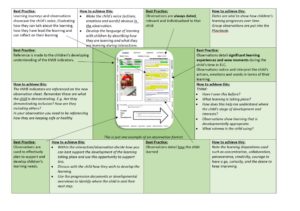![]()
Observations
Resources
What are these?
“A young child’s voice is interpreted by our observations of their actions, emotions and words. These observations are central to assessment and inform us what children need.”
(Realising the Ambition, Education Scotland, 2020, p. 46)
Practitioners must know each child as an individual to be responsive to their needs and interests. Using this knowledge of the child to understand how they learn and their learning dispositions will provide them with a unique and meaningful curriculum experience.
“Observation is the foundation of education in early years. It is through recording and reflecting on children’s activities and interests that we can gather the information necessary for the construction of an appropriate curriculum for them. Observation is also the way in which we can gather the material from which to make an informed professional judgement about children’s progress, and about how to help them best.”
(Planning for Early Learning, Hurst, 1991, p. 80)
Key messages:
- A rich learning environment provides the backdrop against which observations of learning occur.
- Through high-quality observations, practitioners recognise new and significant learning for individual children when it occurs.
- Observations are taken in various contexts, including during independent play, everyday routines, and when engaged with others.
- Observations are written clearly, unbiased, and non-judgmentally (like writing a script for a play that can be re-enacted).
- Observations provide an account of an episode of learning and will often include a description of the practitioner’s role in supporting and extending this.
- Practitioners use their interactions to help children develop learning dispositions, including curiosity, enjoyment, creativity, concentration, collaboration, practice, and perseverance.
- Observations are analysed carefully to tease out specific learning, identifying and planning for children’s next steps.
- Practitioners discuss what has been observed to support individualised and responsive planning.
- Observation is used to assess, evidence, record progress and interests.
- Highly skilled practitioners use various lenses to view the child and their interactions with the environment – schemas, Leuven Involvement Scale, Developmental Milestones (see Developmental Overview tabs at the bottom of the emerging literacy page), attachment theory, play behaviour, Curriculum for Excellence, and key drivers from Realising the Ambition (Education Scotland, 2020).
- Observations are regularly shared with parents/carers and children to discuss progress in learning and development.
- Observations use evaluative language to quantify the adult’s level of support or describe the skills, knowledge or understanding that the child has demonstrated.
Ways we can do this:
High-quality observations should capture the important, meaningful details of a child’s learning and give significant insight into their development and learning dispositions.
Following an observation, practitioners should identify possible ways to take the child deeper in their learning, not necessarily onwards and upwards, but identify various ways to consolidate, widen, and revisit the learning (responsive and intentional planning).
Observations of significant learning experiences should be clearly dated and recorded.
Individual profiles should have sufficient high-quality observations to show a child’s progress and development over time.
Observations can be recorded in various ways: observation cards, notes, transcripts, photographs, examples of children’s creations and achievements can be added alongside observations to make learning visible.
Observations should show the next steps in learning, linking back to the curriculum, to ensure progression. This may take the form of ‘I can…’ statements in trackers or developmental overviews (see tabs at the bottom of the Emerging Literacy & Mathematics & Numeracy pages).
Observations should have enough factual information about what was seen and heard to make us confident in planning the child’s next steps in learning.
Practitioners need to familiarise themselves with progression pathways (trackers and developmental milestones) or ‘I can’ statements to help them identify the next steps in learning for individual children.
Observations should include details of the practitioner’s role in extending learning through the description of the ‘teaching’ role, e.g. modelling, encouraging, explaining, describing, narrating, challenging.
Taking time to step back and observe children allows practitioners to reflect on what engages children, how they approach learning, their strengths, and next steps.
The practitioner level of support required, e.g. significant, a lot, some, a little. To describe the child’s skills, knowledge, and understanding, we could use phrases such as “completed confidently”, “independently”, “completed with ease”, “with support”, “is beginning to”, “with minimum support”.
Please see below for some examples of observations. Not all examples may be appropriate for all settings. They aim to provide a snapshot of different approaches to a written observation. The appropriate features will depend on the setting, practitioners, and children.
(For additional information: A Froebelian Approach: Observing Young Children, Louis and The Froebel Trust, 2022).
Linked Areas of Practice
Assessment
Making Learning Visible
Personal Plans
Planning
Sensitive Interactions
Tools
Reflecting on Practice
SBC Guidance to support
National Guidance to support
Further Reading to support
Training to support
SBC Early Years training video: Great Observations Part 1:
See below for supporting materials
SBC Early Years training video: Great Observations Part 2:
Follow link for acronyms used in presentations
See below for supporting materials
To see all the SBC Early Years Teacher Team training videos visit:
Use Split-screen on iPad when taking observations
Notes app to create observation templates
Great Observations 1
Great Observations 2
Handout info Kathy Brodie Next steps article
Slides 30 + 31 Reading list Great Observations Part 2
Slides 13 22 and 28 handout WAGOLL
Slide 27 – Example modelled observation slide
Slide 24 – Observation Footprint Sheet – annotated
Slide 25 – Handout Adult interaction teaching definition Ofsted



